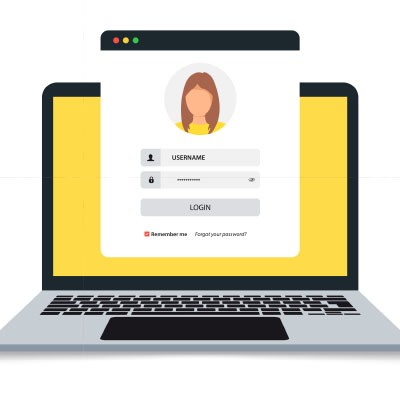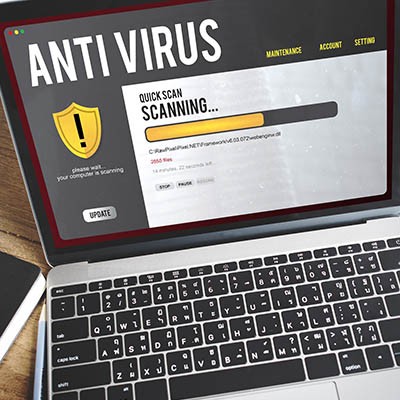Remember a few months ago when Google and Apple joined forces to come up with a system to help state and local governments establish a COVID-19 Exposure Notification system? If you didn’t, you aren’t alone. A lot has been going on lately. Just to catch you up, the two tech giants recently pushed out an update across nearly all modern smartphones so state and local governments can deploy apps to notify people when they may have been exposed to COVID-19. Let’s do a deep dive on what this means for your privacy.
Cerberus IT Solutions Blog
When it comes to your business, especially its technology, some of the buzzwords you hear floating around can be pretty convincing, almost intoxicating. Unfortunately, like most buzzwords, many of these are aggrandized beyond their worth to the average small-to-medium-sized business. Let’s take a look at how this can impact a business’ perception of its cybersecurity, as well as dig into the reality behind these terms.
The World Health Organization has been busy dealing with one of the biggest calamities in contemporary times, the COVID-19 pandemic that has had much of the world on pause for the past few months. Unfortunately, they’ve been dealing with an increase in cyberattacks. Today, we’ll take a look at some of the issues the WHO is having with cybercriminals.
Spoiler alert: it isn’t good news.
On September 7th, 2017, it was made public that Equifax had suffered one of the largest cybersecurity breaches in history, and as a result, had left 145.5 million consumers in the United States vulnerable to identity theft. Due to a website application vulnerability, the personally identifiable information of these people was exposed from May until July of that year.
With all the threats that stand to create problems for your business, it can be surprising to hear that some of your biggest security risks actually derive from your staff, and their exposure to your technology. Less surprising to hear: security issues interfere with the successful operation of your business. Here, we’ve shared a few tips to help your staff better adhere to security practices.
When reading through Microsoft’s latest Security Intelligence Report you will quickly get the notion that phishing attacks are some of the most prevalent cyberattacks. With businesses forced to use technology to support a remote workforce, this is definitely still relevant information. It, then, becomes extremely important that your business does a quality job of training your employees to spot phishing attempts before they become a problem. Let’s take you through some of the telltale signs that you have received a phishing message.
At this point, it’s hard to believe that anyone needs to be told that cybersecurity is important, but some organizations are still doing the bare minimum to protect their network and data. That can’t go on forever. Today, we thought we would discuss how to put together a cybersecurity policy that covers all the bases, and will give you the peace of mind that you are actively combating today’s most present threats to your network, infrastructure, and data.
When it comes to protecting your business, cybersecurity is a huge consideration that must be kept in mind. However, it isn’t the only consideration. Some of the biggest threats to your business can actually come from your own team. Let’s go over the three kinds of insider threats that you need to be on your guard against, and how to avoid them.
There are a lot of security threats directed toward businesses today, with plenty of immoral opportunists seeking to profit at your expense. This makes it critical to secure your network and its data, which sounds like an expensive and time-consuming process. However, it doesn’t have to be, as we’ll show you by highlighting a few ways to protect your business and its assets.
Millions of people are still using the Microsoft Windows 7 operating system despite it being completely unsupported. When Microsoft pulled the plug on support for the OS in January, most industry professionals expected there to be some exploits found pretty rapidly. It turns out that the very first exploit was actually Microsoft’s fault, and that Windows 7 support had a little life in it after all.
Over the past two decades, business technology was largely separated between information technology (IT)--that is, the business’ computers, networking equipment, and peripherals--and operational technology (OT): all other technology. As IT advanced, so has OT, which today presents many of the same risks that IT always has. Today, we will take a look at how to secure your business by focusing on where your IT meets your OT.
The 2020 Consumer Electronics Show is always a good place to see the most innovative consumer technology. CES features products of all types from companies of all sizes. This year, there was a strong contingent of companies bringing products to market in the physical security space. This isn’t all that uncommon, but the reaction to many of these devices is noteworthy.
A few years ago, there was a decision made to make a concerted effort by manufacturers to create their products, but to also create those same products with “smart” technology inside. Basically, because of the rampant innovation of Internet-connected systems, devices, appliances, and knick-knacks of all types we have to ask the question: Are we being dumb for using all these smart devices?
Unless you run a business in which each and every employee is responsible for identical tasks, you are going to encounter the need for variable permissions among your staff so that your data can be better protected. One effective means of enforcing these permissions is through an access management policy. Let’s review a few components you should include in such a policy.
With data being such a valuable asset today (especially personally identifiable data), you can’t afford to let any of the information your company has access to fall into the wrong hands. The same goes for all of your data, especially that which concerns your employees or your clients. Let’s go over a few tips that should help you keep this data safe, step by step.
Over time, your business will accumulate a lot of data, including some that certain employees or departments will have no need to see (or perhaps shouldn’t see). An effective way of keeping eyes from wandering is through an access management policy. Let’s go over a few elements you ought to prioritize in your approach to controlling internal access.
While the major holiday shopping days have passed us by, many people are still looking for that perfect gift often using the Internet to find it. While online shopping is certainly more convenient, it can also be dangerous. To help keep you safe this season and beyond, we’re reviewing a few practices to protect your identity while shopping online.
Trend Micro, the developer of the popular antivirus program, has attracted some unwanted attention after a former employee managed to steal customer data and sell it to scammers. These scammers then use this data to call Trend Micro customers. If you use Trend Micro’s antivirus solutions, you’re going to want to pay close attention to any calls you get.



















